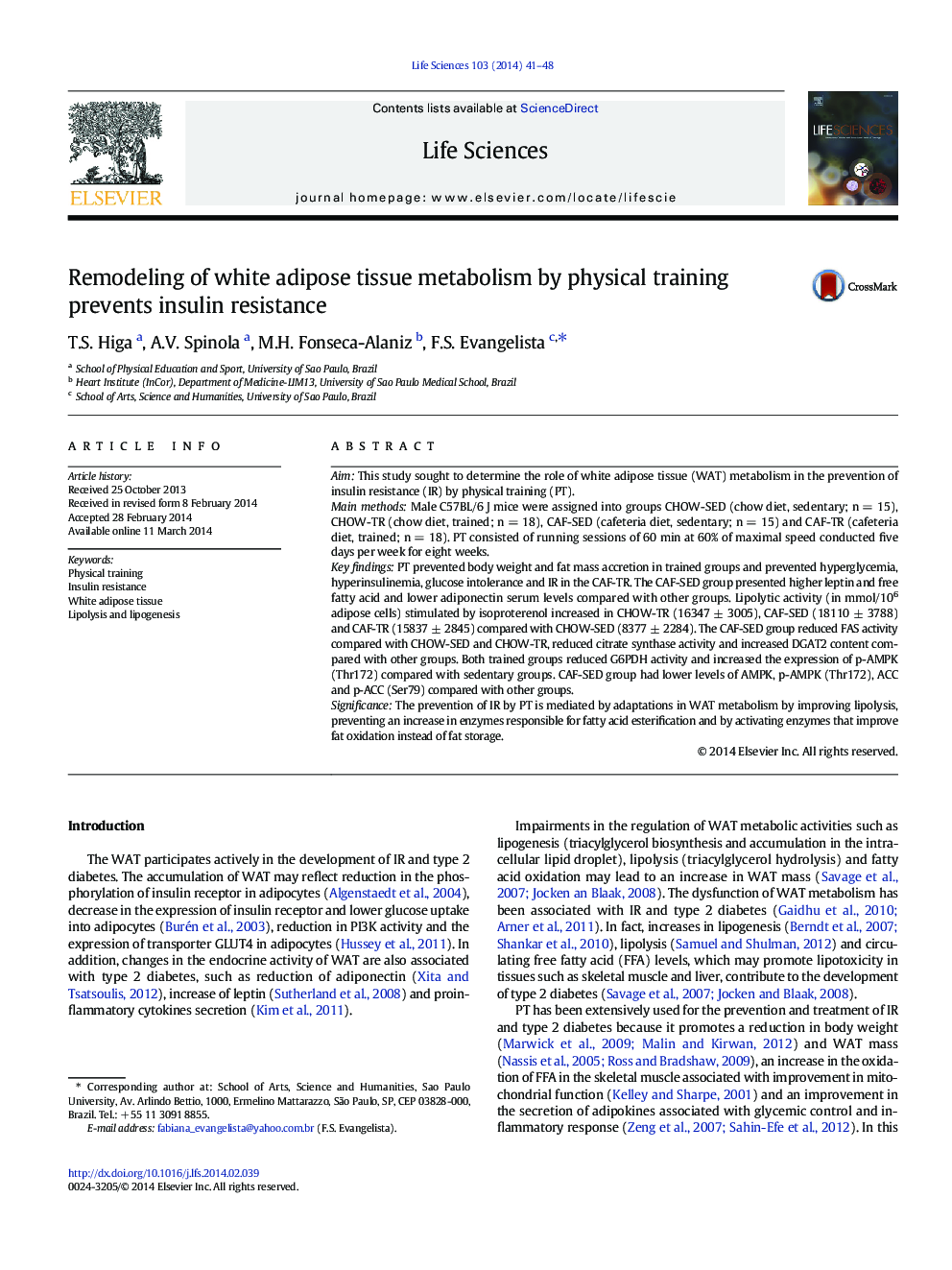| Article ID | Journal | Published Year | Pages | File Type |
|---|---|---|---|---|
| 2551281 | Life Sciences | 2014 | 8 Pages |
AimThis study sought to determine the role of white adipose tissue (WAT) metabolism in the prevention of insulin resistance (IR) by physical training (PT).Main methodsMale C57BL/6 J mice were assigned into groups CHOW-SED (chow diet, sedentary; n = 15), CHOW-TR (chow diet, trained; n = 18), CAF-SED (cafeteria diet, sedentary; n = 15) and CAF-TR (cafeteria diet, trained; n = 18). PT consisted of running sessions of 60 min at 60% of maximal speed conducted five days per week for eight weeks.Key findingsPT prevented body weight and fat mass accretion in trained groups and prevented hyperglycemia, hyperinsulinemia, glucose intolerance and IR in the CAF-TR. The CAF-SED group presented higher leptin and free fatty acid and lower adiponectin serum levels compared with other groups. Lipolytic activity (in mmol/106 adipose cells) stimulated by isoproterenol increased in CHOW-TR (16347 ± 3005), CAF-SED (18110 ± 3788) and CAF-TR (15837 ± 2845) compared with CHOW-SED (8377 ± 2284). The CAF-SED group reduced FAS activity compared with CHOW-SED and CHOW-TR, reduced citrate synthase activity and increased DGAT2 content compared with other groups. Both trained groups reduced G6PDH activity and increased the expression of p-AMPK (Thr172) compared with sedentary groups. CAF-SED group had lower levels of AMPK, p-AMPK (Thr172), ACC and p-ACC (Ser79) compared with other groups.SignificanceThe prevention of IR by PT is mediated by adaptations in WAT metabolism by improving lipolysis, preventing an increase in enzymes responsible for fatty acid esterification and by activating enzymes that improve fat oxidation instead of fat storage.
